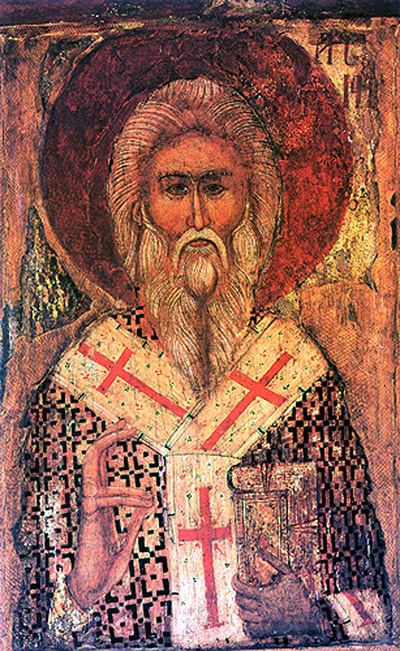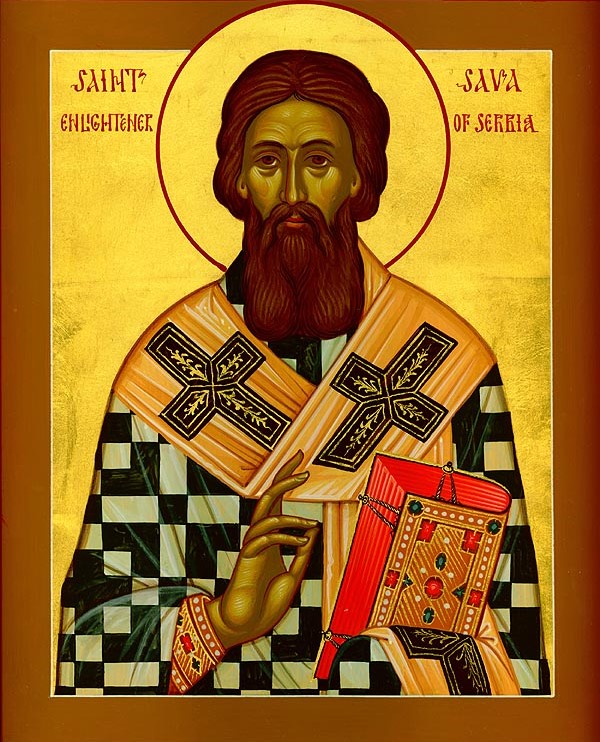Serbia and Bulgaria
In 1219 Saint Sava of Serbia went to Nicea to obtain the approval and blessing of the Church of Constantinople for an independent national church for the Serbs. Sava himself was consecrated as the first “Archbishop of the Serbian lands” by Manuel, Patriarch of Constantinople, in the presence of Emperor Theodore I Laskaris. On Ascension Day in 1220, at a national assembly of the Serbs held at the Zicha monastery, the newly-consecrated Archbishop Sava crowned his older brother, the grand zhupan Stephan, as the first “King of all the Serbian lands” (he is known as Saint Stephan the First-Crowned). And Archbishop Sava established the headquarters of the new Serbian Church at Zicha.

In 1233, after designating his trusted fellow monk, Father Arsenije (also later recognized as a saint), to be his successor as head of the Serbian Church, and leaving him in charge of the affairs of the Church, Archbishop Sava set off on a long pilgrimage and good will trip all across the Middle East. His mission was to visit holy places, and to meet with fellow Christians and share with them the story of the Serbian people becoming united in Holy Orthodoxy.
Saint Sava first went to Jerusalem, then to Alexandria, and through the Egyptian heartland of the Desert Fathers of long ago. Then he went to Cairo, where his warmth and generosity to the poor and the blind melted the hearts of the Muslim sultan and the Muslim population (while there he also gave large donations to several Coptic churches and institutions). Then he made a pilgrimage to Mount Sinai and the famous Monastery of Saint Katherine.
Then this indefatigable ambassador for Serbian Orthodoxy returned to Jerusalem and the Holy Land, visiting for a second time the illustrious monastery founded by his patron saint, Saint Sabbas the Great. Then he undertook an exceptionally dangerous journey to Baghdad, where he was received respectfully by the Sultan of Iraq, and where he visited the Patriarch of the Assyro-Chaldean (Nestorian) Church. From there he went to Antioch, to visit the patriarch there, and the monastery of Saint Symeon the Stylite. Then he went north to Armenia, to Kurdistan, and then westward across Seljuk-Turkey.

Finally he reached Nicea. While there he persuaded the patriarch and the emperor to recognize the reestablishment of the Patriarchate of the Bulgarian Church. Then he traveled to Trnovo, the Bulgarian capital, where he shared the good news of the official recognition of the restoration of the Bulgarian Patriarchate.
While still in Trnovo, before he could return to his beloved homeland, Saint Sava died—on January 14, 1235. He had given his Church and nation a life of outstanding devotion and leadership, having been sustained by the Lord through many grave trials and difficulties.
His body was taken back to Serbia, and placed at the royal monastery of Mileseva, where his relics were a source of great spiritual strength for the Serbian people. These relics were burned by the Ottoman Turks in 1595.
With the advance of Serbian King Miliutin (r. 1282–1321) and his army across the Sar Mountains into northern Macedonia, which opened the way for Serbian expansion southward down the entire Balkan Peninsula, the Serbian state once and for all shifted its main attention away from Rome and towards Byzantium. In fact, Miliutin is credited with strongly resisting the efforts of Byzantine Emperor Michael Paleologos to impose Roman Catholicism on the Balkans after the Union of Lyons in 1274.
